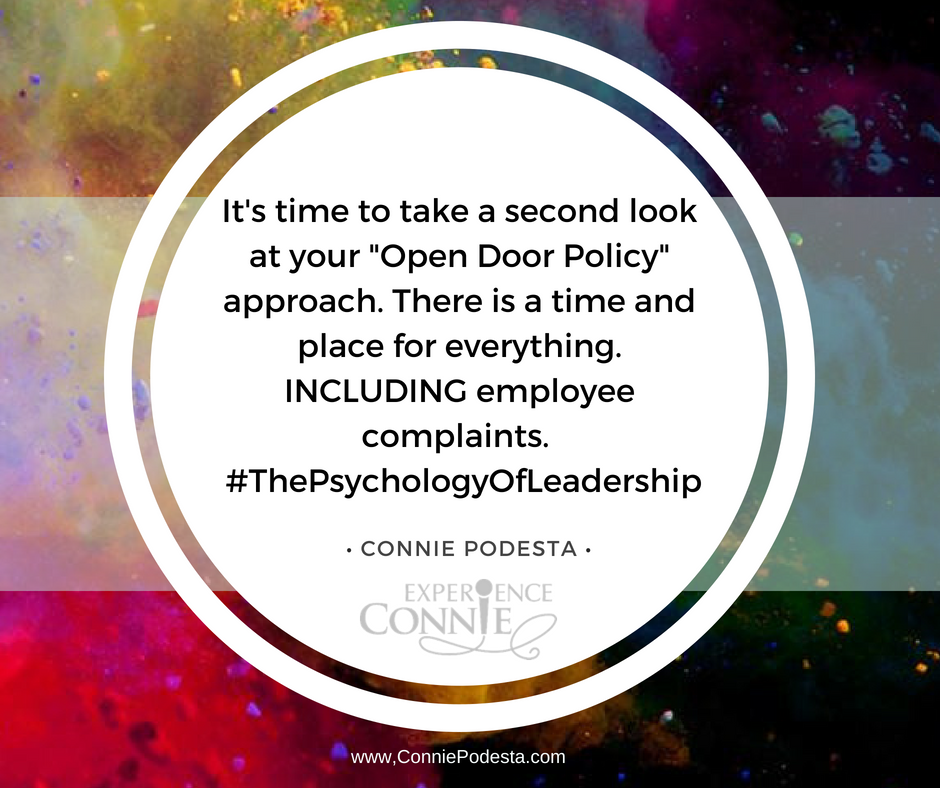
by Leadership Keynote Speaker Connie Podesta
Here’s a question for you. What are three words that make managers want to run the other way? Open Door Policy.
The original intent of an “Open Door Policy” was to create a communication mechanism to ensure that employees would feel free to honestly discuss key issues without fear of retribution or, even worse, losing their jobs. In other words, not only would a leader’s door be open but, hopefully, so would their mind. However, over time that concept has expanded and become an excuse for some employees to also feel free to complain. About anything. Anywhere. Anytime.  Anyplace. And the leader better be constantly available to listen with full attention and support. Or else.
Anyplace. And the leader better be constantly available to listen with full attention and support. Or else.
Here’s the deal: As a forum for complaining, the concept of an “open door” doesn’t work. It puts all the burden upon the leader to solve the problem and doesn’t help the employees to explore possible alternatives.
Think about it: We don’t have a policy of an “Open Door” at home – our kids don’t just walk into our bedrooms or bathrooms whenever they feel like it to tell us whatever is on their minds! Boundaries are set. Personal space is respected. Conversations happen at certain periods of time. Why are we holding stronger boundaries with 7 and 12-year-olds than with our own employees? There is a time and place to discuss important issues, and it isn’t whenever the complaining employee feels like it. Seriously?
When I work with leaders, I encourage them to push back a bit on an employee who waltzes into their office simply complaining about other people or situations. For example, let’s say an employee arrives at your door when you are right in the middle of a project due at five, and they want to talk NOW! Using a calm voice, first determine if anything illegal, unethical, or unsafe is happening. Is there any danger? If so, get on it ASAP. If not, then psychologically it could be in the best interest of everyone involved if you asked them to come back in thirty minutes.
While we’re at it, let’s get another cool dynamic working here--give them some homework to do before your meeting. Ask them to describe the situation, what the #1 issue is, what their role is, how this could affect the long-term success of the company, and what a couple of solutions might be. Two things will happen. One, you won’t see the complainer again that day because they won’t want to do the work. Or two, when they come back with homework done you will have a much better conversation that could very well deliver incredible results for both the employee and the company. That is a win-win!
A job of a leader isn’t to constantly listen to complainers and take the burden of solving the problem upon yourself. It is to teach the people on your team how to find and create solutions. Remember, it is totally possible to be an accessible, transparent, engaged, and highly communicative leader while still setting some boundaries and teaching complainers how to develop a stronger, more empowered and problem-solving mindset!
To learn more about this topic, check out my short video above, “Quit Listening to Employee Complaints,” which is part of my series called Top 10 Things You Need to Quit to Be a Better Leader. Click here to check out my YouTube channel.